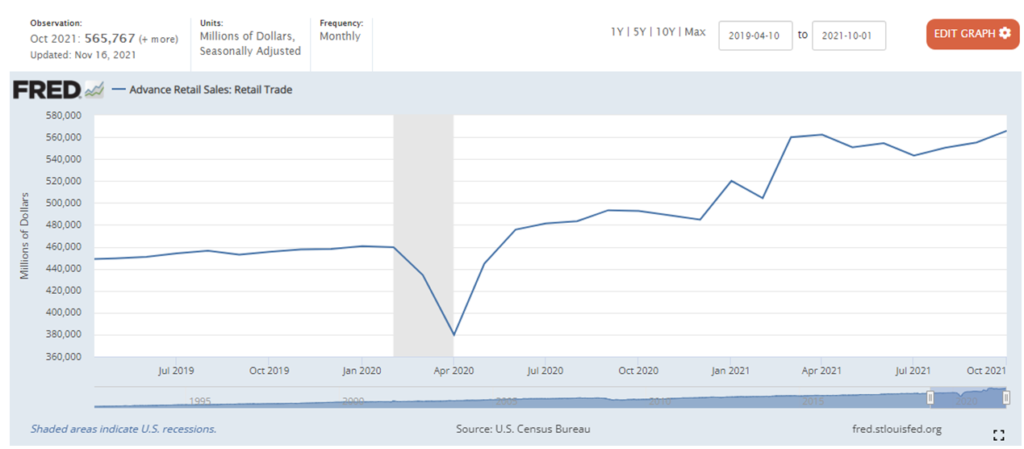During the second half of November port congestion softened in East Asia. Given China’s pandemic protocols and the emergence of the new variant, this could be a brief pre-omicron pause. (more)
But US east coast ports — including sometimes struggling Savannah — are also seeing significantly improved flow. (More and more)
The situation at the Ports of Los Angeles and Long Beach continues to be very tight. While some measures of flow capacity have not gotten worse or slightly improved (more and more), velocity has not increased and volumes to unload continue to build.
Almost every major port has seen increased volumes (and shipping rates). As previously outlined, this reflects very strong and sustained US consumer demand that is apparently continuing. On December 3 the National Retail Federation’s chief economist reported:
… the ever-important Thanksgiving holiday weekend now helps to mark the holiday season rather than serving as the kickoff it once was. Consumers and retailers have both revised their playbooks and broken with previous traditions. With the momentum we’ve seen so far likely to continue, it seems probable that we will exceed our initial projection, which was made when the late-summer growth in COVID-19 was still a key factor. Rather than the growth of 8.5 percent to 10.5 percent over 2020 we expected in October, we now believe holiday retail sales could grow as much as 11.5 percent.
To further emphasize: The NRF projections for near-term demand are entirely consistent with demonstrated patterns of demand fulfilled. For several months through the end of October US retail sales have been one-fifth better or even higher than pre-pandemic, as demonstrated by the chart below.
Where all-time volume records are being broken to support this demand, increased friction has emerged. The problems at LA/LB are amplified by the preexisting proportion of total flows that depend on the neck of this hourglass. It is regularly reported that about 40 percent of total US imports are discharged at these neighboring ports. About 90 percent of East Asian imports flow through Southern California. Given the time and expense of alternatives (e.g., Ningbo to Los Angeles: 6548 miles versus Ningbo to Savannah 16,438 via Suez) — and the lack of any other Pacific port with close to comparable freight forwarding capacity — LA/LB remains the best choice even with the persistent pile-up.
The push of inbound flow will not decline until after the pull of demand subsides.
